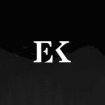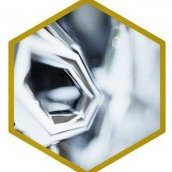
rmar
-
Posts
97 -
Joined
-
Last visited
Reputation Activity
-
 rmar got a reaction from littledetails in What's the Difference Between Affinity Photo and Photoshop?
rmar got a reaction from littledetails in What's the Difference Between Affinity Photo and Photoshop?
The key for me is the statement "just starting to get into photography".
The deciding factor is the price imo. AP has a lot of photoshops power without the high price tag. Combine it with the (now free) NIK Collection and you have a killer combination.
It's still at Version 1 so there will be many more free updates coming prior to a V2. There is a list that covers the developers plans somewhere on these forums, plus a lot of feature requests that they might incorporate to satisfy photoshop experts.
-

-
 rmar reacted to Sean P in Is an extremely large Affinity file normal?
rmar reacted to Sean P in Is an extremely large Affinity file normal?
Hi Krozwynd
Welcome to the Affinity Forum and my apologies for the delay in replying.
With regards to your question about Noise, you are indeed correct, you need to view it at 100% to get an accurate view of what your export will look like. With the JPG export could you attach your source AFPhoto so I can investigate?
Finally the reason for the large file size is that RAW files are generally in RGB 16bit, however when you develop them in Affinity we intentionally set the colour mode to be RGB 32bit which contains a LOT more data than in 16bit. We also automatically take a snapshot after developing as well which also adds to the size. The snapshot can be removed from the Snapshot Panel and the colour mode can be changed to Document > Colour Format. This should help for the filesize.
-
 rmar reacted to dmstraker in How to sharpen without halos (super-simple method)
rmar reacted to dmstraker in How to sharpen without halos (super-simple method)
One of the banes of sharpening, especially in landscapes, is that light lines appear around horizons, trees and so on, forcing you to scale back your sharpening efforts. This can be a nuisance when everythings' great, apart from those darned halos!
A very simple solution:
1. Duplicate the pixel layer.
2. Sharpen away. Use Unsharp Mask and turn up the radius as far as you like. Ignore the light halos around things.
3. Here's the magic: Blend mode: Darken.
Ole! The halos disappear!
So what's happening? For those who are not saying 'but that's obvious':
Sharpening finds edges and makes one side lighter and the other side darker to trick the eye into taking greater notice of the edge.
In Darken blend mode, Affinity compares pixels in both the duplicate and original images and shows the darker pixel (not the lighter one). Any pixels which have been darkened will be in the sharpened, duplicated layer along edges, and will be shown. Any which have been lightened (on the other side of the sharpened line) will not be shown as the darker pixels from the original layer will be used. Any pixels not affected by the sharpening will be the same, so the blend has no colour-changing effect.
Just like that.
If there are parts of the picture where you want to keep the light edges in the sharpening, then of course all you need to do is add a white mask to the original layer (or between the original and duplicate) and paint black over the areas to keep this light edging.
Note: You can use Difference blend mode to see the sharpened area and guide any masking. Add a temporary Invert layer at the top to make this easier to see, if you like.
Corollary: If you blend with Lighten mode, you can probably use this one-sided sharpening to create a glow around things.
-
 rmar got a reaction from CircularWebs in Social media Artboards and export presets for all your social media needs
rmar got a reaction from CircularWebs in Social media Artboards and export presets for all your social media needs
Thanks
-
 rmar reacted to R C-R in Affinity Photo: How can I trim a image to its size?
rmar reacted to R C-R in Affinity Photo: How can I trim a image to its size?
howdytom,
I am not sure this is what you are looking for but you might try this modified version of your Affinity Photo workflow:
1. If the background is not transparent, first use the Magic Wand tool to select & delete it.
2. CMD-click (Mac, probably Control-click on Windows) on the image layer's thumbnail in the Layers panel. This should select all non-transparent pixels.
3. Copy the selection to the clipboard.
4. From the File menu use "New From Clipboard" to create a new file, which should be no larger than is needed to contain the selected pixels.
-
 rmar reacted to Roberto1972 in Running 32 bit plugins in Affinity Photo
rmar reacted to Roberto1972 in Running 32 bit plugins in Affinity Photo
Hi,
Just wanted to let you know that AlphaPlugins LaunchBox successfully allows you to run your good old 32 bit plugins from within Affinity Photo, which is 64 bit.
This also applies to Serif PhotoPlus (at least X8 works - which was my initial concern). Very affordable tool seeming to be the only practical way to still let you benefit from your precious otherwise trash banned 32 bit plugins!
After installation issues (see below) were solved I successfully ran 32 bit plugins on backgrounds, layers as well as on selections. Majority of plugins should work (including AlienSkin ones, yeaii!)
Installation:
• Execute the installer.
• Destination program folder: any folder you like (AlphaPlugins folder will be created in there, including program files).
• Manual plugin folder installation: choose your 64 bit plugins folder (AlphaPluginsBridge.8bf will be added there during installation).
• If your 64 bit plugins folder only has the 8bf added and no ini file then create the ini file manually: create text document named AlphaPluginsBridge.txt; change .txt extension to .ini
• In the manually created AlphaPluginsBridge.ini file add a single line: the path to where LaunchBox is installed (e.g. C:\Program Files\AlphaPlugins\AlphaPluginsLaunchBox.exe ) and save the file.
• Run Affinity Photo (from here I assume Affinity Photo already knows what your 64 bit plugins folder is)
• Open image, go to plugins menu, run AlphaPlugins - AlphaPlugins 32bit Bridge...
• AlphaPlugins LaunchBox will start: enter registration info or remain in trial mode
• In 'Properties' menu (remove the default plugin folder and) add your plugin folder(s) containing 32bit plugins.
• Select a plugin folder in this list and click OK (plugins will be loaded and main UI is shown)
• Open 'Filters' menu; select (32bit) plugin and click OK: from here everything behaves like running normal plugins
• When running AlphaPlugins 32bit Bridge... again from the plugins menu in Affinity then just go straight to the 'Filters' menu and select the plugin to be run.
(only when you want the Filters menu to show plugins from an other plugins folder you need to go to the Properties menu and select an other plugin folder).
Works like a charm so had to let know here :-)
Cheers,
Roberto
-
 rmar reacted to MEB in cloning does not work
rmar reacted to MEB in cloning does not work
Hi shadstarn, Fogey,
Welcome to Affinity Forums :)
To clone between layers make sure the appropriate option is selected in the context toolbar dropdown (after the Aligned checkbox).
To clone between documents, select the layer you want to clone to, press ⌥ (option/alt) to select the source area you want to use from that layer then click the Add Global Source button in the context toolbar, change to the target document and paint. The small white circle in the Sources panel indicates the source area used from that layer. You can have more than one layer as a source.
For more information about cloning check this video tutorial: Affinity Photo - Clone Sources.
-
 rmar reacted to Callum in Basic question--what is alpha and why should I preserve it?
rmar reacted to Callum in Basic question--what is alpha and why should I preserve it?
Hi RickJohnson,
You can find out more about Alpha by reading the below article:
https://www.howtogeek.com/howto/42393/rgb-cmyk-alpha-what-are-image-channels-and-what-do-they-mean/
Preserve alpha will keep the transparency of the layer you're applying a filter or FX to intact, meaning the effect/filter etc will not affect the transparent areas.
C
-
 rmar got a reaction from justwilliam in Critique of wedding pictures
rmar got a reaction from justwilliam in Critique of wedding pictures
There's a lot you can do with portraits with the free NIK plugins.
Long tutorial using photoshop and nik but should help you https://www.youtube.com/watch?v=DhaICsk4R8k&feature=youtu.be&t=191
and a more advanced one https://www.youtube.com/watch?v=835ZrB-ZJJs
-

-
 rmar reacted to smadell in Luminosity Masks
rmar reacted to smadell in Luminosity Masks
Good morning, WeiPhotoArts
It's important to remember a couple of things. First, the macros create Luminosity Selections, not masks. As such, they set you up for whatever your next step might be. You can create a mask from the selection (click the Mask button on the Layers panel), but you can also use them to create Adjustment Layers (like the Levels layer you wanted to make) or Live Filter layers. When you make such a layer, the luminosity selection is applied as a mask on the adjustment/filter layer. You can deselect the marching ants (Command-D) after creating the new layer or mask.
Also, the more recent iterations of Beta 1.5 have a menu item (View > Show Pixel Selection) which lets you turn off the marching ants but leave the selection active. Personally, I find this a little confusing (since I have to remember that a selection is active without the visual clue) but it is a way to get the distraction of the ants out of the way. If you use that frequently (e.g., turn it off then turn it back on to get a quick look) you should probably assign a keyboard shortcut to that View menu item.
-
 rmar reacted to dmstraker in Easy luminosity adjustments
rmar reacted to dmstraker in Easy luminosity adjustments
Attached is an AP file containing just a group of adjustments. Copy and paste the group as a child of an image (or above if you like). Then open the Curves, HSL or Vibrance sub-groups and double-click on any of the adjustments to tweak blacks, shadows, mid-tones, highlights or whites.
It's quite simple - just a curve in Blend Ranges for each. You can constrain changes further with masking.
You can also use it in conjunction with macros from a previous post (https://forum.affinity.serif.com/index.php?/topic/38379-luminosity-mask-selection-macros/), for example to preview area of the image that will be affected.
5-Stage_Adjustments.afphoto
-
 rmar reacted to James Ritson in How does Affinity Photo work internally?
rmar reacted to James Ritson in How does Affinity Photo work internally?
Hi, just some additional info that might help you:
If you begin developing a raw file (and thus are in the Develop Persona), most of the processing is done in 32-bit unbounded with a linear colour space. Some of the colour operations are performed in ROMM RGB, which will allow you to saturate and intensify difficult colour tones (like artificial blue and red light) without clipping them.
When you develop the raw file, by default the output is clipped to 16-bit integer and the colour profile is converted to sRGB. If you wish to remain in ProPhoto or work in another space, you can either:
Check the Outputs option in Develop and choose an output colour profile. Or
In Preferences>Colour, change RGB Profile to whatever you wish (e.g. ProPhoto) and by default all developed raw files will be converted to that profile. Just bear in mind that if you choose this option, any images you open without an embedded profile will have the chosen profile assigned. So, for example, if you open a JPEG with no ICC profile embedded, and you have ProPhoto set as your RGB profile, that JPEG will have the ProPhoto profile assigned to it and will look different. Just something to be aware of!
But to summarise, yes, you can achieve end-to-end colour management in Photo, particularly if you're coming from raw. If you're pre-processing your images in other software I recommend exporting from that software as a 16-bit TIFF with ProPhoto (or another wide gamut profile) for optimum quality.
Hope that helps!
-
 rmar got a reaction from Alfred in Need help in editing photos of people
rmar got a reaction from Alfred in Need help in editing photos of people
lol you got me. at least the link is correct even if i can't spell.
-
 rmar got a reaction from Chintan in Terminology differences AP to PS??
rmar got a reaction from Chintan in Terminology differences AP to PS??
Looks like very few differences. Thanks for the replies.
-

-
 rmar reacted to dmstraker in Mono-tones bar for Zones, Curves and Luminosity selection
rmar reacted to dmstraker in Mono-tones bar for Zones, Curves and Luminosity selection
Attached is a simple tones bar that can be used in AP for:
Assessing luminosity of parts of an image. Constraining curves adjustments to specific tones. Variable luminosity-based selection and edit. Details on origin and use are included in a pdf.
mono-tones.zip
-
 rmar reacted to StuartRc in Texture Brush Packs [Dots]
rmar reacted to StuartRc in Texture Brush Packs [Dots]
Texture Brush Dots
Upload of 120 Texture brushes [Set 1] with sample sheets
Changes
1. Modified Dynamics (Flow and Accumulation Jitter mostly...)
2. Assembled into single Zip file
3. Added new set of sample visuals
4. Added A4 sample sheet [PDF]
5. Brush Labels re-named in individual packs to comply with how sets have been organised
6. Removed old sample visuals
New Format
TB DOTS Sample120.pdf
TB DOTS Set 1 P 01 - 12.zip
Single Brush Packs (10 brushes per pack)
Old versions of TB DOTS set 1 (above)
Assembled in one place for convenience
Texture Brush Pack 05.zip
Texture Brush Pack 06.zip
Texture Brush Pack 07.zip
TB DOTS-Pack 29.zip
TB DOTS-Pack 30.zip
TB DOTS-Pack 31.zip
TB DOTS-Pack 34.zip
TB DOTS-Pack 35.zip
TB DOTS-Pack 36.zip
TB DOTS Packs 37-39.zip
-
 rmar got a reaction from andreacaliendi in Good color space gamut explanations for rookies like me. I only want to print my images.
rmar got a reaction from andreacaliendi in Good color space gamut explanations for rookies like me. I only want to print my images.
I found these videos today and figured there might be other rookies out there who could benefit from them. In the videos he is using photoshop but I see no reason this information would not be useful to Affinity users.
https://www.youtube.com/watch?v=bBh3DE2OIOw
https://www.youtube.com/watch?v=7SjiqEj2xBk
https://www.youtube.com/watch?v=JJYHxy9H0eE&feature=youtu.be&t=1483
https://www.youtube.com/watch?v=yBNmA1nu-pQ&feature=youtu.be&t=1135 https://www.youtube.com/watch?v=bMYyaWXTDug (really interesting info for printing among other things)
Hope it helps someone
-
 rmar got a reaction from verysame in Colour Matching?
rmar got a reaction from verysame in Colour Matching?
for photoshop but should work in AP too
This might help. https://www.youtube.com/watch?v=WHvfVc_8eMc
This is even easier https://www.youtube.com/watch?v=9vtbtmzno8s
-
 rmar got a reaction from dmstraker in WIBNI: Luminosity selection brush
rmar got a reaction from dmstraker in WIBNI: Luminosity selection brush
Here's the other article on using silver efex for color fwiw. http://www.northlight-images.co.uk/using-silver-efex-pro-for-colour-prints/
-
 rmar got a reaction from dmstraker in WIBNI: Luminosity selection brush
rmar got a reaction from dmstraker in WIBNI: Luminosity selection brush
You can try this trick with Silver Efex plugin https://blogarithms.com/2013/02/06/sfxpro-for-color/
-
 rmar got a reaction from ncJohn in "Photo" is not a product name
rmar got a reaction from ncJohn in "Photo" is not a product name
I'm fine with the terms Photo and Designer. Outside the forums we could use the term photoshopkiller but that's a lot of typing.
-
 rmar got a reaction from A_B_C in "Photo" is not a product name
rmar got a reaction from A_B_C in "Photo" is not a product name
I'm fine with the terms Photo and Designer. Outside the forums we could use the term photoshopkiller but that's a lot of typing.








